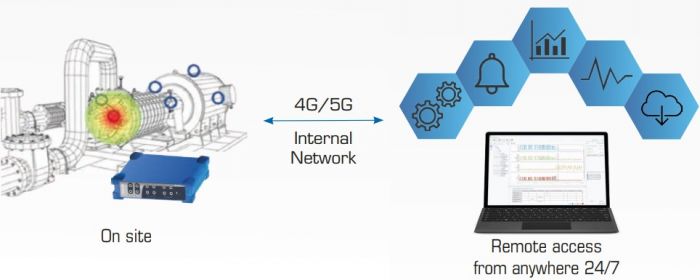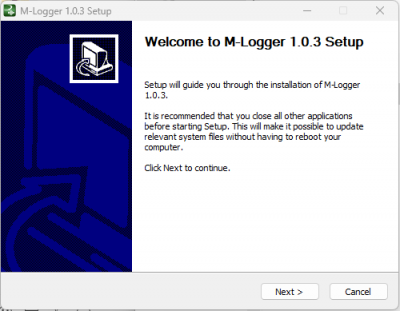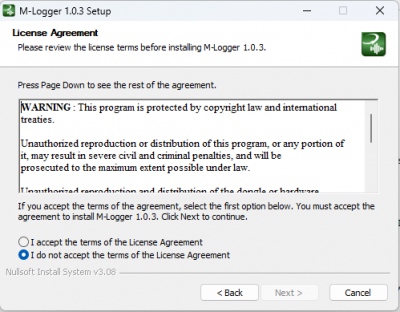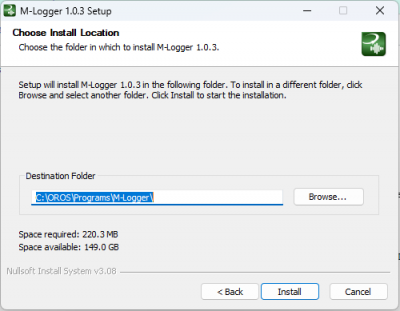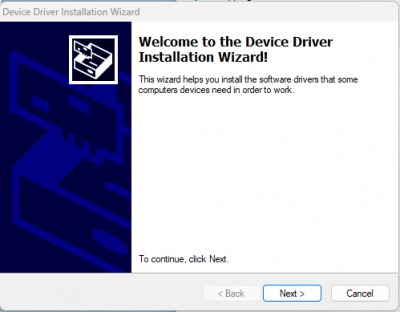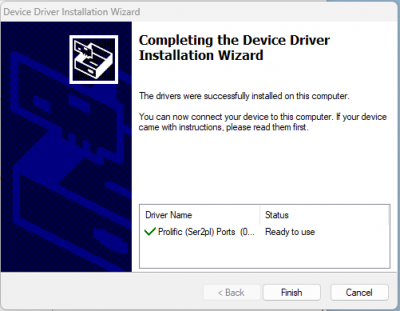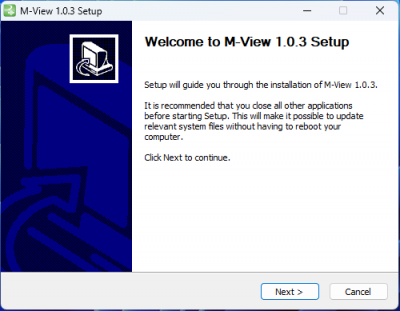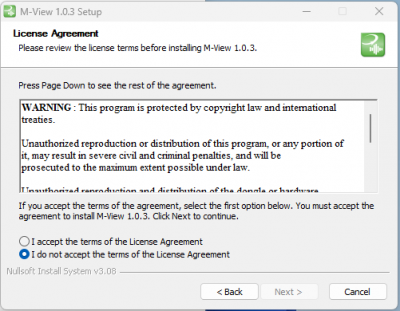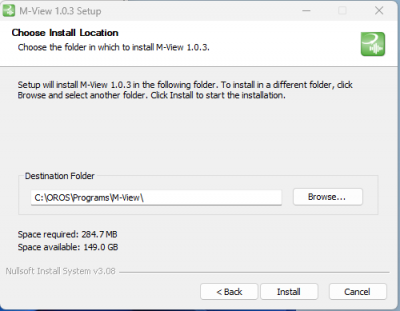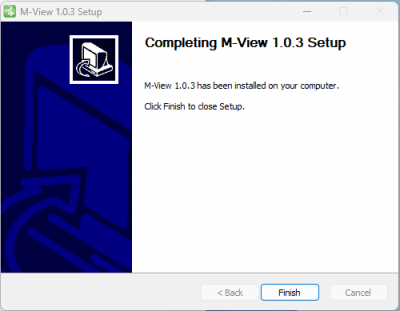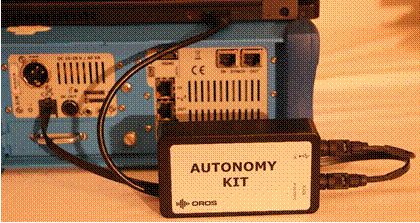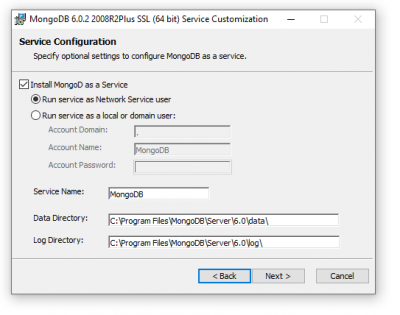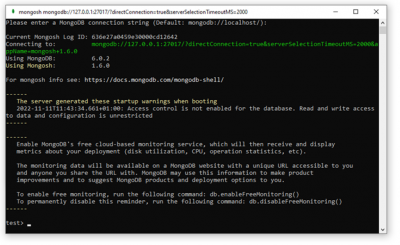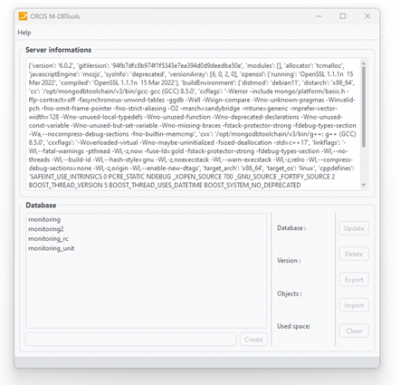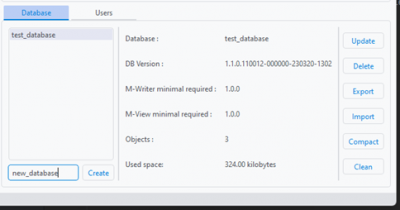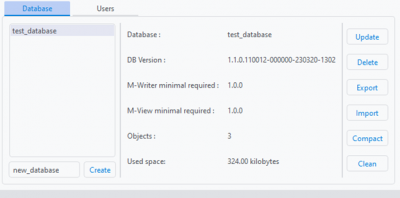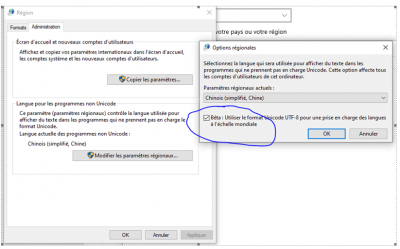Difference between revisions of "Monitoring Solution"
| (14 intermediate revisions by 3 users not shown) | |||
| Line 16: | Line 16: | ||
==Installation== | ==Installation== | ||
===Download=== | ===Download=== | ||
Download last version of [https:// | Download last version of [https://my.oros.com/categories/software/monitoring/ Monitoring Solution]. | ||
===Equipment required for the installation=== | ===Equipment required for the installation=== | ||
| Line 24: | Line 24: | ||
===Installation of NVGate software=== | ===Installation of NVGate software=== | ||
First you need to [[ | First you need to [[NVGate_V16:_Install_Process|install NVGate]]. | ||
===Installation of Monitoring software=== | ===Installation of Monitoring software=== | ||
| Line 50: | Line 50: | ||
The drivers for the Autonomy kit are installed during the default installation. | The drivers for the Autonomy kit are installed during the default installation. | ||
Next, run “SetupM-View.exe” program in the PC which is used for checking collected data (usually is not the same PC which runs M-Logger), and the following window is displayed: | Next, run “SetupM-View.exe” program in the PC which is used for checking collected data (usually is not the same PC which runs M-Logger), and the following window is displayed: | ||
| Line 128: | Line 124: | ||
c. Configure MongoDB | c. Configure MongoDB | ||
Open with a text editor mongod.cfg file located in mongodb folder, default : "C:\Program Files\MongoDB\Server\6.0\bin\mongod.cfg". | |||
We need to enable zstd compression, find wiredTiger block and edit it as followed : | |||
<code> | |||
wiredTiger: | |||
collectionConfig: | |||
blockCompressor: zstd | |||
</code> | |||
Configure the net part as needed, example with port 27017 and allowing any external IP address :<code> | |||
# network interfaces | |||
net: | |||
port: 27017 | |||
bindIpAll: true | |||
# bindIp: 127.0.0.1" | |||
</code> | |||
If you want to secure the connection to MongoDB, only allow know IP address. | |||
Documentation is available on official website: https://www.mongodb.com/docs/manual/reference/configuration-options/ | |||
d. MongoDB Shell installation | d. MongoDB Shell installation | ||
| Line 196: | Line 210: | ||
c. Configure MongoDB | c. Configure MongoDB | ||
Open with a text editor mongod.cfg file : /etc/mongod.conf | |||
We need to enable zstd compression, find wiredTiger block and edit it as followed : | |||
<code> | |||
wiredTiger: | |||
collectionConfig: | |||
blockCompressor: zstd | |||
</code> | |||
Configure the net part as needed, example with port 27017 and allowing any external IP address :<code> | |||
# network interfaces | |||
net: | |||
port: 27017 | |||
bindIpAll: true | |||
# bindIp: 127.0.0.1" | |||
</code> | |||
Documentation is available on official website: https://www.mongodb.com/docs/manual/reference/configuration-options/ | |||
d. Enable MongoDB as a service | d. Enable MongoDB as a service | ||
| Line 219: | Line 249: | ||
MongoDB is the database engine, and at least one database needs to be created to be used by OROS Monitoring solution. | MongoDB is the database engine, and at least one database needs to be created to be used by OROS Monitoring solution. | ||
Run M-DBTools.exe, which is installed in M-Logger or M-View folder, and login: | Run M-DBTools.exe, which is installed in M-Logger or M-View folder (by default C:\OROS\Programs\M-Logger or C:\OROS\Programs\M-View), and login: | ||
* Server address: Your server address, localhost if database is installed on running PC | * Server address: Your server address, localhost if database is installed on running PC | ||
| Line 302: | Line 332: | ||
* PC | * PC | ||
Contact you IT manager to properly configure the computer : disable | Contact you IT manager to properly configure the computer : disable sleep mode, no password to automatically restart windows, no low-energy or powering-off option …). | ||
In addition, installation of Teamviewer is recommended in order to monitor from a remote access. | |||
In order to open your windows session automatically : https://learn.microsoft.com/en-us/troubleshoot/windows-server/user-profiles-and-logon/turn-on-automatic-logon | |||
If you plan to monitor your application for more than a couple of hours, it is advised to power both the computer and the OROS analyzer by mains (not on battery). | If you plan to monitor your application for more than a couple of hours, it is advised to power both the computer and the OROS analyzer by mains (not on battery). | ||
Latest revision as of 13:42, 19 June 2023
Introduction
The OROS Monitoring solution can continuously supervise the noise and vibration levels of your critical assets, notifying alerts autonomously when predetermined levels are exceeded and catching real time high added value data on the spot.
This solution is dedicated for mid to long term monitoring application, and the main features are:
- Operate standalone: power cut and restart management
- From basic to advanced event triggering conditions
- Pre-trigger time domain signal recording remotely downloadable for further analysis
- Advanced and flexible actions on events
- Automatic alert notifications for rapid countermeasures
- Database and remote access to event log, trend, and measurement data for initial diagnostics at any time
- Flexible storage capabilities, suitable for site with or without a network connection
Installation
Download
Download last version of Monitoring Solution.
Equipment required for the installation
USB drive containing Monitoring software installation setups “SetupM-Logger.exe” and "SetupM-View.exe".
NVGate software must have been installed first (from V16.00.002).
Installation of NVGate software
First you need to install NVGate.
Installation of Monitoring software
In the PC that is connected to OROS analyzer, run “SetupM-Logger.exe” program, and the following window is displayed:
Click on “Next”, and the following window is displayed:
Read the terms in the license agreement and check “I accept the terms in the License Agreement” if you agree. Click on “Next”, the following window is displayed:
Select the installation directory. It is highly recommended to keep the default location: C:\OROS\Programs\M-Logger. Click on “Install” to start the installation, and wait until the following window is displayed:
Click on “Next”, the following window is displayed:
Click on “Finish” to exit the setup wizard, and OROS M-Logger software is successfully installed.
The drivers for the Autonomy kit are installed during the default installation.
Next, run “SetupM-View.exe” program in the PC which is used for checking collected data (usually is not the same PC which runs M-Logger), and the following window is displayed:
Click on “Next”, and the following window is displayed:
Read the terms in the license agreement and check “I accept the terms in the License Agreement” if you agree. Click on “Next”, the following window is displayed:
Select the installation directory. It is highly recommended to keep the default location: C:\OROS\Programs\M-View. Click on “Install” to start the installation, and wait until the following window is displayed:
Click on “Finish” to exit the setup wizard, and OROS M-View software is successfully installed.
Autonomy kit installation (optional)
The autonomy kit must be plugged to the analyzer's RJ11 port and to the PC USB port, and drivers should be installed. Drivers are installed automatically during the installation of M-Logger, and can also be installed manually in case troubleshooting is necessary.
This autonomy kit is dedicated to OROS analyzers. Do not use it with any other device.
Only use original components provided.
Figure 1 – Autonomy kit installation with OR36
![]() This Autonomy Kit contains electronic equipment. It should not be mixed with general household waste. For proper treatment, return this product to OROS or to any local company authorized to recycle waste electrical and electronic equipment.
This Autonomy Kit contains electronic equipment. It should not be mixed with general household waste. For proper treatment, return this product to OROS or to any local company authorized to recycle waste electrical and electronic equipment.
 This Autonomy Kit complies with following European Standards:
This Autonomy Kit complies with following European Standards:
- 2014/35/EU low voltage directive
- 2011/65/EU and 2015/863 ROHS directive
- 2012/19/EU WEEE directive
Database installation and management
Database installation
MongoDB is a document-oriented NoSQL database used for high volume data storage and used by OROS Monitoring. OROS Monitoring solution is compatible with MongoDB 6.0.x only. MongoDB can be installed on different platform, and following instructions explain how to install it on Windows or Linux system.
Installation on Windows system
a. Pre-requisites MongoDB support these Windows versions :
- Windows 10 et 11 64 bits
- Windows Server 2016, 2019, 2021 64bits
Download installation files:
- MongoDB: https://fastdl.mongodb.org/windows/mongodb-windows-x86_64-6.0.5-signed.msi
- Mongosh: https://github.com/mongodb-js/mongosh/releases/download/v1.8.0/mongosh-1.8.0-x64.msi
b. MongoDB installation
Execute mongodb-windows-x86_64-6.0.5-signed.msi and click on “Complete”:
Let default parameters filled:
Install
c. Configure MongoDB Open with a text editor mongod.cfg file located in mongodb folder, default : "C:\Program Files\MongoDB\Server\6.0\bin\mongod.cfg".
We need to enable zstd compression, find wiredTiger block and edit it as followed :
wiredTiger:
collectionConfig:
blockCompressor: zstd
Configure the net part as needed, example with port 27017 and allowing any external IP address :
# network interfaces
net:
port: 27017
bindIpAll: true
# bindIp: 127.0.0.1"
If you want to secure the connection to MongoDB, only allow know IP address.
Documentation is available on official website: https://www.mongodb.com/docs/manual/reference/configuration-options/
d. MongoDB Shell installation
Run mongosh-1.8.0-x64.msi, uncheck “Install just for you” and continue installation.
Run mongosh.exe from "C:\Program Files\mongosh". A command window will popup asking MongoDB information, do not write anything and press Enter, connection should be done:
e. Create an admin user
In the shell windows type: use admin
Then the following command will create an administrator user for MongoDB, which is mandatory. You will be able to create standard ReadOnly or Write access user using Monitoring dedicated M-DBTools.
In this example the admin user created is named “oros” and his password is “oros”, please use a strong password for the admin user:
db.createUser({ user: "oros" , pwd: "oros", roles: ["userAdminAnyDatabase", "dbAdminAnyDatabase", "readWriteAnyDatabase"]})
Restart the computer, and now MongoDB is configured and ready to be used.
Installation on Linux system
Installation on Debian
https://www.mongodb.com/docs/v6.0/tutorial/install-mongodb-on-debian/
https://www.mongodb.com/docs/mongodb-shell/install/
a. Pre-requisites
Packages: gnupg2, wget, sudo, net-tools, curl
b. MongoDB installation
- Add MongoDB server key
wget -qO - https://www.mongodb.org/static/pgp/server-6.0.asc | sudo apt-key add –
- Add MongoDB repository
Debian 11
echo "deb http://repo.mongodb.org/apt/debian bullseye/mongodb-org/6.0 main" | sudo tee /etc/apt/sources.list.d/mongodb-org-6.0.list
Debian 10
echo "deb http://repo.mongodb.org/apt/debian buster/mongodb-org/6.0 main" | sudo tee /etc/apt/sources.list.d/mongodb-org-6.0.list
Debian 9
echo "deb http://repo.mongodb.org/apt/debian stretch/mongodb-org/6.0 main" | sudo tee /etc/apt/sources.list.d/mongodb-org-6.0.list.
- Install MongoDB
sudo apt-get update
sudo apt-get install -y mongodb-org
sudo apt-get install -y mongodb-mongosh
c. Configure MongoDB Open with a text editor mongod.cfg file : /etc/mongod.conf
We need to enable zstd compression, find wiredTiger block and edit it as followed :
wiredTiger:
collectionConfig:
blockCompressor: zstd
Configure the net part as needed, example with port 27017 and allowing any external IP address :
# network interfaces
net:
port: 27017
bindIpAll: true
# bindIp: 127.0.0.1"
Documentation is available on official website: https://www.mongodb.com/docs/manual/reference/configuration-options/
d. Enable MongoDB as a service
systemctl enable mongod.service
e. Create an admin user
mongo
use admin
db.createUser({ user: "oros" , pwd: "oros", roles: ["userAdminAnyDatabase", "dbAdminAnyDatabase", "readWriteAnyDatabase"]})
f. Start MongoDB
sudo systemctl start mongod
Database management
MongoDB is the database engine, and at least one database needs to be created to be used by OROS Monitoring solution.
Run M-DBTools.exe, which is installed in M-Logger or M-View folder (by default C:\OROS\Programs\M-Logger or C:\OROS\Programs\M-View), and login:
- Server address: Your server address, localhost if database is installed on running PC
- Server port: 27017 (by default, other if you changed it in your MongoDB configuration file)
- User name: Defined in “Create an admin user” chapter
- Password: Defined in “Create an admin user” chapter
Please note that only administrators are allowed to run this tool, otherwise it will not connect to MongoDB.
Server information and databases list will be displayed once connected.
Manage databases
a. Create a database
Fill a name in the dedicated field then press create, after few seconds/minutes the database will appear into the list.
b. Database information
Clicking on your database will show some information like the version, number of object, space used ...
c. Update database
Due to an upgrade of M-Logger / M-View, it might be necessary to update your database, and thus M-DBTools is needed.
Select the desired database and press update. Depending on the number of objects this may take some time, you will be notified once it's done.
Manage users
Users are manageable in the "Users" panel:
a. Create user
Click on "Create new user" button, a dialog will popup asking for an username and a password, then click on create, the user will appears in the user list.
b. Grant access to user
- Grant access to a dedicated database
Clicking on a user and a database will show the access rights for this user:
Access can be granted by clicking on the desired rights, below "READ_WRITE" is selected, allowing the user to write to the database, which is mandatory for a M-Logger user.
Then click on "Update rights" to apply the new rights.
- Grant access to all databases
Checking "Any databases" will display different access rights, which will be applied to all database + MongoDB instance. Also, if you need to create another MongoDB administrator then it’s an "Any Databases" rights, and select "ROOT" + "DB_ADMIN" + "USER_ADMIN" rights.
Then click on “Update rights” to apply the new rights.
PC and Windows configuration
In order to guarantee a full autonomy, the computer must be configured to reboot in case of any power failure. The following PC parameters are advised:
PC automatic restart due to power failure:
To account for any potential power failure at the analyzers location the following settings should be programmed on the PC to automatically switch on the PC once the power is restored.
Access the PC's BIOS:
- Restart PC, press F12 (on most PC's) to access the PC's Bios.
- Check the Bios parameters.
- On power management check the option "power on AC".
Specific settings should be chosen in the computer
- PC
Contact you IT manager to properly configure the computer : disable sleep mode, no password to automatically restart windows, no low-energy or powering-off option …). In addition, installation of Teamviewer is recommended in order to monitor from a remote access.
In order to open your windows session automatically : https://learn.microsoft.com/en-us/troubleshoot/windows-server/user-profiles-and-logon/turn-on-automatic-logon
If you plan to monitor your application for more than a couple of hours, it is advised to power both the computer and the OROS analyzer by mains (not on battery).
Consider installing a remote access software.
It could be useful to control the computer when an alert is trigged for example.
FAQ
I use microsoft windows on chinese/japanese language. However, monitoring crash when I click on "refresh button". How to solve this ?
On windows regional settings, tab admin, let the unicode program on your language, however click on "beta : use the unicode UTF-8...". This solve the issue.
